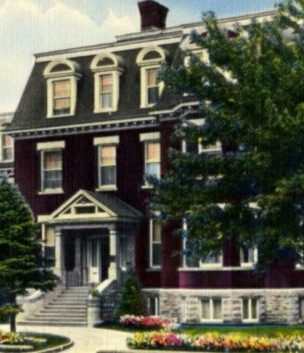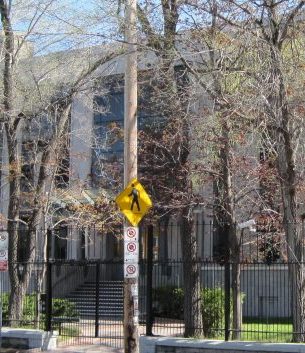Atop a hill overlooking the Rideau River on Ottawa’s Charlotte Street stood a mansion that had its share of drama. It saw a sensational spy scandal and a suspicious fire.
Custom-built for a lumber baron’s son, John Frederick Booth, the home was cast in the ornate Queen Anne Revival style in 1917. The architect was John W.H. Watts, a former Public Works designer who turned to building expensive homes for Ottawa’s elite.
The house was a baronial retreat for one of the city’s wealthiest families. Here Booth married off his only daughter to a Danish prince in 1924. It was after Booth’s death that the house at 285 Charlotte Street achieved international notoriety.
In 1942 the Government of Canada purchased it from Booth’s heirs and sold it the USSR as an embassy. Prime Minister Mackenzie King would call it “a place of intrigue.” From the day the Russians opened the mission, the house on Charlotte Street “was almost immediately used as a source for espionage,” wrote one historian.
Here on September 5, 1945 cipher clerk Igor Gouzenko fled with enough secret cables to send eight Canadian spies to prison including MP Fred Rose. Gouzenko was sentenced to death in absentia by the Soviet Supreme Court. He spent the rest of his years hiding in southern Ontario under the pseudonym “Mister Sabotka.”
On New Year’s Day 1956 the Charlotte Street mansion burned to the ground. The cause was undetermined. Fire crews agreed the building might have been saved if only embassy staff had not blocked their entry. Instead, the Russians let the flames spread as they hurriedly carted boxes of secret documents to awaiting cars.
The Soviets, it turned out, had much to hide. KGB defector Vasili Mitrokhin recounted in his 1999 memoirs The Mitrokhin Archive: “Between 1951 and 1953 the Ottawa legal residency, spurred on by Moscow’s criticism of its inertia since the defection of Gouzenko, recruited eleven agents.”
They stole the plans for the Avro Arrow and recruited Laval economist Hugh Hambleton as a Soviet agent, Mitrokhin wrote. They planted an agent in the RCMP and secretly financed the Canadian Communist Party with funds code named “U.S. wheat.” In a spy operation nicknamed Operation Cedar, the Soviets scouted areas to sabotage oil and gas pipeline installations from British Columbia to Quebec, and arranged an agents’ rendezvous at Lake of the Woods on the Minnesota border.
Only years afterward, with KGB defections and the collapse of the U.S.S.R., was the extent of Soviet skullduggery on Charlotte Street finally revealed. And today? The address at No. 285 remains the Embassy of Russia, rebuilt in 1957 as a grey Stalinist bunker.
By Andrew Elliott







